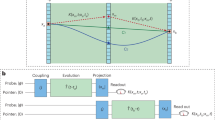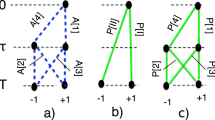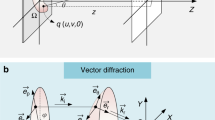Abstract
IN order to demonstrate the possibility that an optical path between two fixed points may be merely stationary, that is, neither maximum nor minimum, Mr. T. Smith1 includes in the infinite number of paths with which an actual path is to be compared those which in one homogeneous medium are non-rectilinear. Thus in Fig. 1, if A is the image of A due to the lens PQ, the actual path APAB is compared with the longer and shorter imaginary paths APCB and AQDB.
This is a preview of subscription content, access via your institution
Access options
Subscribe to this journal
Receive 51 print issues and online access
$199.00 per year
only $3.90 per issue
Buy this article
- Purchase on Springer Link
- Instant access to full article PDF
Prices may be subject to local taxes which are calculated during checkout
Similar content being viewed by others
References
NATURE, 133, 830; 1934.
Dublin Univ. Review, p. 795, Oct. 1833. Mathematical Papers, 1, 311; 1931.
Drude, “Theory of Optics”, 9–11; 1902.
Author information
Authors and Affiliations
Rights and permissions
About this article
Cite this article
DARBYSHIRE, O. Interpretation of Fermat's Principle. Nature 135, 586–587 (1935). https://doi.org/10.1038/135586a0
Issue Date:
DOI: https://doi.org/10.1038/135586a0
This article is cited by
-
Stationary Optical Paths
Nature (1935)
Comments
By submitting a comment you agree to abide by our Terms and Community Guidelines. If you find something abusive or that does not comply with our terms or guidelines please flag it as inappropriate.



